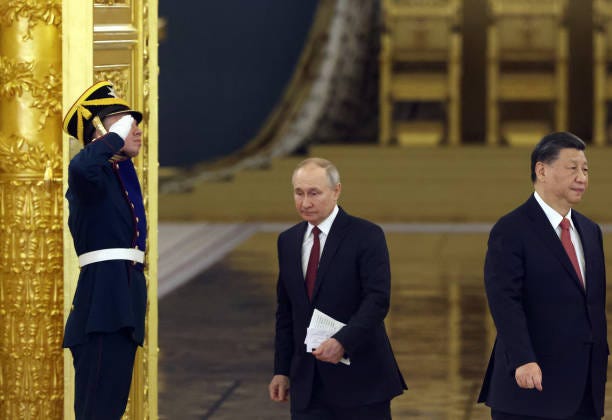LAWRENCE FREEDMAN

This year marks the 60th anniversary of the split between the Soviet Union and the Peoples Republic of China bursting out into the open with some bitter polemics. Unsurprisingly this anniversary has not excited much comment. The hostility between the two communist giants eased during the 1980s. The Soviet Union no longer exists and its legatee, the Russian Federation, now claims a close friendship with China. It’s possible that this piece of international history has not registered with many policy-makers. They might therefore assume the Sino-Russian relationship to be on far firmer foundations than is the case and so miss the opportunities for some creative Western diplomacy.
A bit more history: Nixon’s China diplomacy
By the end of the Cold War, the point at which history may start for many of the current generation of think-tankers and policy-makers, relations between Moscow and Beijing were relatively calm and cordial. Before that, however, there had been a period of great tension.
When the split first became apparent in 1963, triggered by Moscow’s reluctance to help Beijing develop its own nuclear weapons, American officials were nonplusssed. Up to that point they had always spoken of a ‘Sino-Soviet bloc’ to underscore the combined power of international communism. Now the conflict between the two could not be ignored. By 1969 it was so deep that they appeared to be close to war, with border skirmishing where the Amur and Ussuri rivers come together. Moscow made it known that it was contemplating launching a preventive strike before China had an operational nuclear arsenal. This crisis passed but during the 1970s both the Soviet Union and China developed their armed forces with each other in mind as much as the ‘imperialist’ Americans.
At first American sympathies were largely with the Soviets in this argument, as they began to work on arms control while China descended into the convulsions of the Cultural Revolution. At the start of the 1970s the calculations changed. China was exhausted by perpetual chaos and regular purges, and uncomfortable in its comparatively isolated international position. President Richard Nixon and his national security advisor Dr Henry Kissinger saw an opportunity. If they could play off the Soviets and the Chinese against each other then they could gain greater leverage over both.
For Nixon this meant ditching his Republican Party’s long-standing support of the Kuomintang, the Chinese Nationalists occupying only Taiwan but still laying claim to being the rightful government of all of China and occupying the Chinese seat on the UN Security Council. Reversing this position recognised the reality of the situation. Despite efforts of the US to stop this, the General Assembly expelled Taiwan from the UN. This was when the core US position, followed by every administration since Nixon’s, was established.
The US supported Beijing’s view, which also happened in principle to be Taipei’s, that the two entities were part of the same country. The US acknowledged ‘that all Chinese on either side of the Taiwan Strait maintain that there is but one China and that Taiwan is a part of China,’ while noting the need for a peaceful resolution to the dispute between the two. Secretary of State Blinken re-iterated this view when he visited Beijing in early June. The US also confirms that it would defend Taiwan should Beijing seek to take control by force. Both stances demonstrate how the weight of the past continues to shape Sino-US relations.
No comments:
Post a Comment